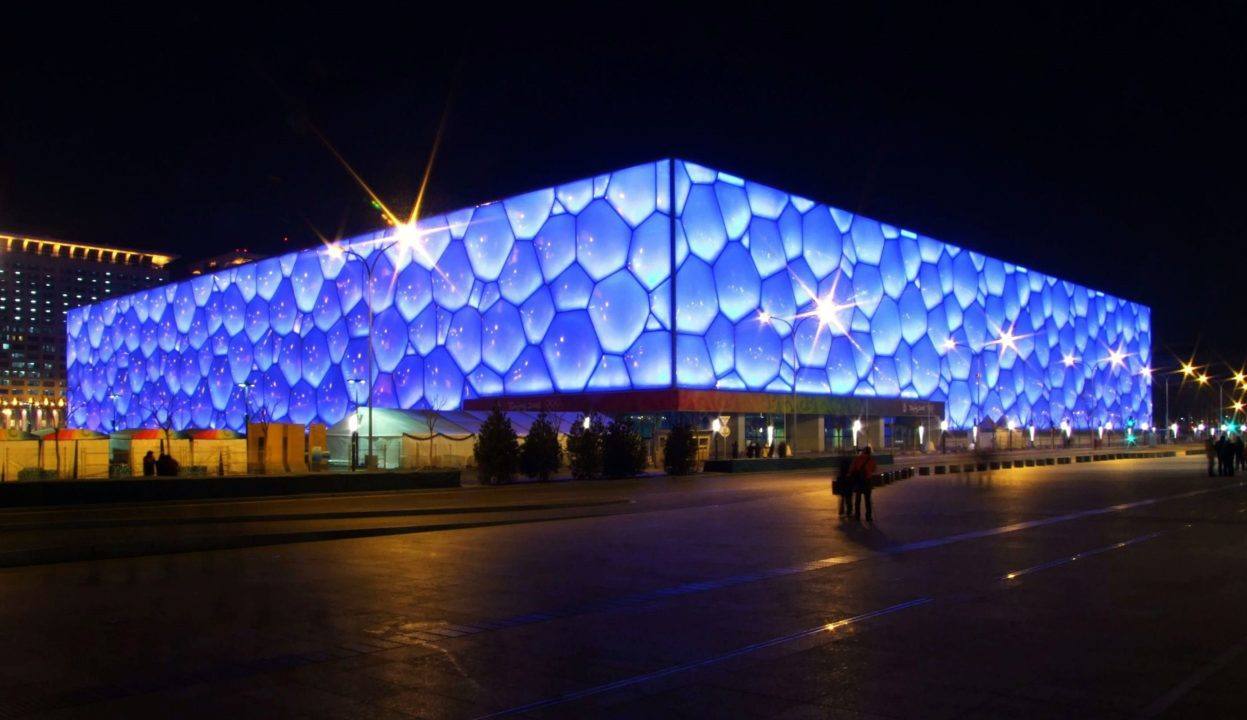China’s National Aquatics Center, commonly referred to as the “Water Cube” during the Beijing Summer Olympics in 2008, will be known as the “Ice Cube” for the upcoming Beijing Winter Olympic and Paralympic Games starting this week.
After renovations, the ten-lane pool was converted into a four-sheet curling rink. The “Ice Cube” in its current configuration host up to 4,600 people. During the 2008 Olympics, the facility had a capacity of 17,000
“The 50-meter pool had been completely drained and filled in with a very complex floor structure built on scaffolding with concrete blocks to ensure the folly would not move when the weight of the ice and players were added,” said Mark Callan, Deputy Chief Ice Technician for the Games in an interview with the World Curling Federation.
The transformation from “Water Cube” to “Ice Cube” makes this building the only stadium in the world to host both aquatic and ice sports at the same time.
“According to the current plan, it will only take a month to accomplish the transformation from swimming courses to ice rinks. And in the future, the two modes can be switched to one another to create a recyclable system,” Yang Qiyong, general manager of the National Aquatics Center said in an interview with Beijing Tourism.
Given the COVID-19 regulations in Beijing, the Olympics are operating under a “closed loop” system, and China stopped selling tickets to mainland China residents earlier this month. Currently, only special guests will be allowed to attend competitions.
During the 2008 Olympics, the “Water Cube” had a capacity of 17,000 with 6,000 permanent seats and 11,000 temporary seats that were added for the Olympics. After the Games, it was converted to a public water park with huge water slides, while maintaining its competitive swimming and training pools.
The “Water Cube” hosted swimming, diving, and synchronized swimming at the 2008 Olympic Games. At these games, 25 swimming world records were broken. However, all but two records were broken by swimmers wearing the LZR Racer Bodyskin, which FINA banned in 2009.
Michael Phelps’s success of going eight-for-eight gold medals at the 2008 Beijing Olympics was accomplished at the “Water Cube.” At the Games, Phelps set world records in seven events in his quest for eight gold medals (200 freestyle, 200 butterfly, 200 IM, 400 IM, 4×100 freestyle relay, 4×200 freestyle relay, and 4×100 medley relay).
“The Water Cube” is also the location of one of the most iconic swimming races in history, the men’s 4×100 freestyle relay where the United States and France had an epic showdown en-route to destroying the world record.
Transformation Video:
As cold as ice! 🧊
See how the incredible ‘Water Cube’ venue of Beijing 2008 has transformed into the Ice Cube for #Beijing2022 #StrongerTogether | @worldcurling 🥌pic.twitter.com/aHZumvA2PE
— The Olympic Games (@Olympics) January 31, 2022

I assume that the switch is a permanent option with the ability to switch back and forth? Otherwise the 1997 Short Course World Champs had a temporary pool build on top of the ice at the Scandinavium and I think at least 1 of the practice rinks still had ice, so they did/could “host both aquatic and ice sports at the same time”.
1997 FINA World Swimming Championships (25 m) – Wikipedia
Lol